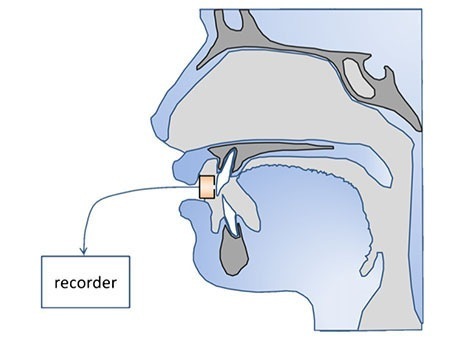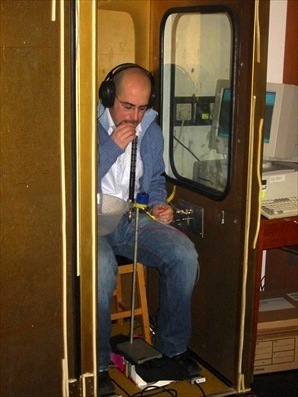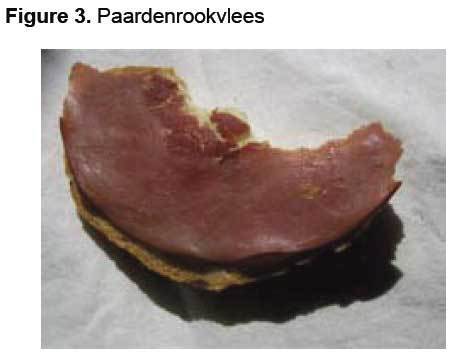Marc Abrahams's Blog, page 517
February 12, 2013
Kansas is Flatter than a Pancake (again and still)
Today, which pancake authorities have proclaimed to be International Pancake Day, let’s look at the classic study “Kansas Is Flatter Than a Pancake“. We published it in volume 9, issue 3 of the magazine.
The article was written by Mark Fonstad and William Pugatch (of the Department of Geography, Texas State University, San Marcos, Texas) and Brandon Vogt (of the Department of Geography, Arizona State University, Tempe, Arizona).
Professor Fonstad has since moved to the University of Oregon. Professor Vogt is now at the University of Colorado.

February 11, 2013
Lots of numbers, plain and almost simple
Inder J. Taneja wants you to see some numbers, and so he presents them to you in this paper:
“Natural Numbers from 44 to 1000 in terms of Increasing and Decreasing Orders of 1 to 9,” Inder J. Taneja, arXiv:1302.1479, February 6, 2013. The author [pictured here] was at one time a professor at the Universidade Federal de Santa Catarina, in Brazil, writes (using the royal We):
“In this work we have put the natural numbers starting from 44 to 1000 in terms of 1 to 9 in an increasing as well as decreasing orders. In both the cases some numbers are difficult to write, but from 71 onwards we have all. To bring these numbers, thousands of combinations are considered without use of any programming language. The next part of this work shall bring further numbers starting from 1001.”
Here are some of Inder J. Taneja’s many numbers:

The paper ends by saying:
Final Remarks: There are many ways to write each number. We have given preferences to one without use of brackets, except the numbers 247, 348, 337, 403, 604, 610, 622, 623, 695, 787, 788, 939, 940, 943, 954, 959, 991, 994, 997, 998, 999 and 1000 in the first case, and in the second case there are approximately 80 numbers where we have used the brackets. Since the work is done manually (without use of programming language), we are not sure whether it is possible the write these numbers without use of brackets. Any way, it is difficult to avoid brackets, because as numbers increases (1001 onwards) the possibilities of writing each number are very less. In the first case the numbers like, 1, 9, 10, 17, 18, 24, 25, 30, 31, 35, 36, 39, 40, 42 and 43 can also be written in the increasing order, but we have considered here from 44 onwards to have symmetry in both the cases. Unfortunately, the number 52 is not possible to write in both the situations.
References: This is first work of its kind, so there are no bibliographic references.
(Thanks to investigator Rodolfo Baggio for bringing this to our attention.)

Behind the left-leaning Eiffel Tower experiment
Rolf Zwaan writes, in his blog, about the experiment that led (among bigger things) to the 2012 Ig Nobel Prize in psychology:
I alluded to the fact that I had produced an amusing title a few years ago for an article that was published in Psychological Science (it was intended as a parody on the article titles in that journal). I also mentioned that that article won the Ig Nobel Prize for psychology last year. This prize is awarded for “research that first makes you laugh and then makes you think.”
I thought it might be interesting to describe the creative process behind this paper. I’ll start by saying that I was not a creative force behind the paper, so I’m describing it as a participant observer.
My favorite Beatles song is A Day in the Life….
This photo shows Rolf Zwaan partially leaning to his left:


Miss Conduct’s psych-based theory of romance (with added Star Trek)
Miss Conduct outlines her psychology-based theory of romance, illustrated with examples from Star Trek:
So here’s my Theory of Romance, based on work by David McClelland, a great man with whom I had the tremendous privilege to work early in my grad-school career, and Dan McAdams, author of one of the best non-academic books on psychology I have read.
One way of thinking about individual differences is motivation–what gets a person going, what cranks her engine, what he feels lost and despondent if he doesn’t get. Some people love to solve problems, others to be the center of attention, still others to teach or serve or share or command. McClelland and McAdams researched three major motivations–power, achievement, and intimacy–that everyone has to some degree, with one or two are usually dominant throughout a person’s life. (Like most psychologists, I am very high in need for power and intimacy, with just enough achievement motivation to get me through statistics and the graduate school bureaucracy.)…
…Spock
Achievement: If people high in power motivation are like Kirk, the achievement folks are more like Spock. As Dr. McClelland used to say, “Need fo achievement wants to build a better mousetrap. Need for power just wants the world to beat a path to its door.” Achievers get a charge out of solving problems, taking well-calculated risks, and general lifehacking. Invite your high-achievement beau to show you around the MFA and you may wind up irritably sipping coffee for an hour in the atrium while he composes a letter on his iPad on how the management could improve the exhibits’ human-factors engineering….

The sound of the taste of your coffee
The Edible Geography blog tells of an innovatively intense, focused approach to listening to people eat:
…in a paper to be published in June 2013 in the journal Food Hydrocolloids, scientist George A. Van Aken of NIZO, a Dutch food research company, reveals a new method of measuring mouthfeel: the wonderfully named “acoustic tribology.” Van Aken took a tiny contact microphone, packed it in polyethylene to keep it dry, and secured it behind a test subject’s upper front incisor teeth in order to record the acoustic signal produced by the varying vibrations of their papillae as their tongue rubbed against their palate.

Diagram showing Van Aken’s experimental acoustic tribology set up, from his forthcoming paper “Acoustic emission measurement of rubbing and tapping contacts of skin and tongue surfaces in relation to tactile perception.”
In short, Van Aken’s device means that we can now listen to what our tongues feel.
The process works by picking up vibrations within tongue tissue, which vary depending on the amount of deformation the papillae experience when rubbing against the palate. To return to our initial experiment, you can actually listen to a recording of the feel of black coffee (mp3), and then compare it to the softer sound of the feel of coffee with cream (mp3) or hear them both back-to-back in this NIZO video (wmv) — from sawing wood to depilling a sweater, and back again, interrupted by an occasional higher-pitched pop (apparently, these are caused by the “snapping of salivary films and air bubbles at the papilla surfaces”)….
 Edible Geography also discusses how this relates to the long series of experiments conducted by Charles Spence, who shared (with colleague Massimiliano Zampini) the 2008 Ig Nobel Prize in nutrition for electronically modifying the sound of a potato chip to make the person chewing the chip believe it to be crisper and fresher than it really is.
Edible Geography also discusses how this relates to the long series of experiments conducted by Charles Spence, who shared (with colleague Massimiliano Zampini) the 2008 Ig Nobel Prize in nutrition for electronically modifying the sound of a potato chip to make the person chewing the chip believe it to be crisper and fresher than it really is.
Zampini is pictured here, in the midst of that potato chip experiment.

February 10, 2013
Robots and humans interact – part 1 of 3
Improbable takes a look at the RO-MAN Workshop 2012 – the 21st IEEE International Symposium on Robot and Human Interactive Communication, which was held September 9-13, Paris, France.
Part 1 : Avoiding a poke in the eye
NOTE: No students were harmed during this experiment – conducted at the Academy for Safety Intelligence, Nagoya University, Japan.
“The participant wearing protective glasses and the robot were separated by a working table. To minimize harming the participant, the original end- effectors for picking up and placing mechanical parts were replaced with square pyramid-shaped flexible polyurethane foam.”
And then :
“… a situation is created in which the sharp end effector tip of a robot suddenly approaches the eyes of a facing participant.”
But would the experimental participant move out of the way in time? That might depend, to a large extent, on their Reaction Time (RT).
“The results showed that there are individual differences in the avoidance RT, maximum avoidance acceleration, and maximum avoidance speed. The results also showed that the avoidance RT is negatively correlated with the maximum avoidance acceleration and maximum avoidance speed, while that the latter two have a strong positive correlation.”
Thus, explain the researchers :
“… further investigations into avoidance action characteristics should be pursued with a focus on people who have a lower ability to avoid harm.”
see: Study on Avoidance Action Parameters against a Sharp End-Effector Tip Approaching Human’s Eyes
UPDATE : Needless to say, the experiment could not be allowed to go so far as to actually poke a student in the eye, even with a foam-encased gripper – so the research team set about another study (following-up the RO-MAN paper) in which a robot’s metallic end-effector was fully exposed. And this time the robot jabbed it directly at an unprotected eyeball, causing considerable damage. The eyeball did not belong to a student, but rather, a recently-deceased pig.
“Specifically, the eyelid served as a safeguard. In regard to the collision position, the severity of injury to the sclera was estimated to be lower than that to the cornea. In regard to the collision angle, the severity decreased with an increase in the angle from the normal direction of the eyeball. This was a very interesting result.”
See: Basic Experiments on Collision of Sharp Mechanical Hazards against Eye for Estimation of Injury Severity, (Proceedings of the 2012 IEEE International Conference on Robotics and Biomimetics, pp. 1912-1917, Guangzhou, China, 2012, Dec. )
COMING SOON : RO-MAN’s dancin’ ‘bots


Relative Finger Length and Age at First Marriage in Semi-Nomadic People
Here’s further evidence that Relative Finger Length sheds light on practically everything:
“The Second to Fourth Digit Ratio and Age at First Marriage in Semi-Nomadic People from Namibia,” Piotr Sorokowski, Agnieszka Sorokowska, Dariusz Danel, Mara L. Mberira and Leszek Pokrywka, Archives of Sexual Behavior, Volume 41, Number 3, 2012, pp. 703-710.


Lowdown update for contra enthusiasts: a mega-saxophone
Jim Cowdery writes:
No doubt your followers have been clamoring for updates to the contrabass/contrabassiphone post from several years ago.
I am happy to provide this demonstration of the subcontrabass saxophone; the lowest note seems to be A-flat, a major second lower than a contrabassoon and a major third lower than a double bass with a C extension:

February 9, 2013
Calculated death (or whatever) by coffee
A calculation to see how many cups of coffee you would need to drink in order to kill yourself.I thought it might be interesting to do some back of the envelope calculations to bring to you, some information on how many cups of coffee to avoid drinking, so as to not kill yourself. However, this calculation is not as easy as it sounds…
… the funny thing is, by the next day, that 2500mg would have been metabolized or cleared itself and only about 50mg of this is left behind. Which means that the net total amount of caffeine still in a person’s system if he or she were to continue drinking a cup of coffee every 24 minutes for a 48 hour period is 2550mg (2500mg + 50mg).
It turns out that your body is potentially quite capable of dealing with such a heavy coffee dosage, because that new 2550mg level becomes 53mg by the next 24hours – therefore three days of drinking a cup of coffee every 24 minutes will result in a net retention of 2553mg (2500mg + 53mg) and so on. I haven’t had a chance to extrapolate this over the full year (365 days), but I’m pretty sure that even a constant coffee drinking regime (1 cup every 24 minutes for the full year) wouldn’t work out to a retention amount above the lethal dose.
(HT John Rennie)

Involuntary Hippophagia (1): Horsemeat, a view from Croatia
 As our UK readers will know, Britain is currently reeling from the effects of an outbreak of ‘Involuntary Hippophagia‘. (We hereby suggest that name.*) But not everyone agrees that eating horsemeat is inadvisable. If you’re going to eat meat, they say, then maybe horsemeat isn’t such a bad choice. For an example of this viewpoint see a recent ‘scientific and professional paper’ from Dobranić, V., A. Večkovec, M. Kadivc, and B. Njari from the University of Zagreb, Croatia (published in MESO, The First Croatian Meat Journal, Issue 4, July/ Aug. 2008) ‘HORSEMEAT AND HIPPOPHAGIA’
As our UK readers will know, Britain is currently reeling from the effects of an outbreak of ‘Involuntary Hippophagia‘. (We hereby suggest that name.*) But not everyone agrees that eating horsemeat is inadvisable. If you’re going to eat meat, they say, then maybe horsemeat isn’t such a bad choice. For an example of this viewpoint see a recent ‘scientific and professional paper’ from Dobranić, V., A. Večkovec, M. Kadivc, and B. Njari from the University of Zagreb, Croatia (published in MESO, The First Croatian Meat Journal, Issue 4, July/ Aug. 2008) ‘HORSEMEAT AND HIPPOPHAGIA’
“A higher content of water, proteins and glycogens, and a smaller content of fat in horsemeat make it more suitable for nourishment, particularly of more demanding people, in comparison to pork or beef.”
“The geographic position and the breed structure of the horse population in Croatia provide good chances for a profitable production of horsemeat with possible export orientation.”
“It is evident that horsemeat is a valuable food of animal origin. In spite of a slight increase in the production of horsemeat in the world, as well as in Europe, the market demands are obvious. Geographical location, insufficient exploitation of waste pasture areas and the breed structure of the horse population in Croatia provide good chances for a profitable production of horsemeat with possible export orientation.”
*We offer, in addition to the name, this DEFINITION:
Involuntary Hippophagia: Unintended ingestion of a horse, or part thereof

Marc Abrahams's Blog
- Marc Abrahams's profile
- 14 followers




